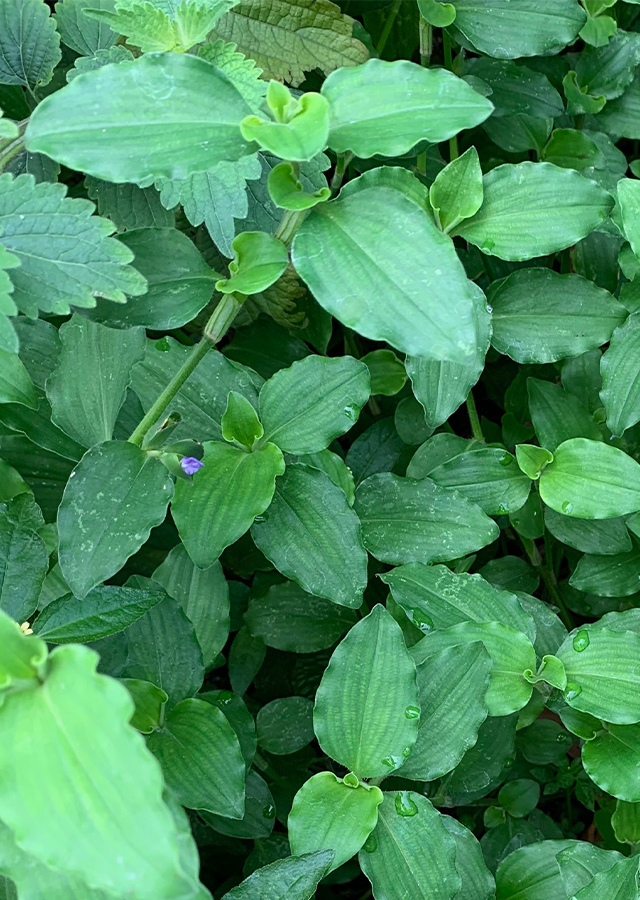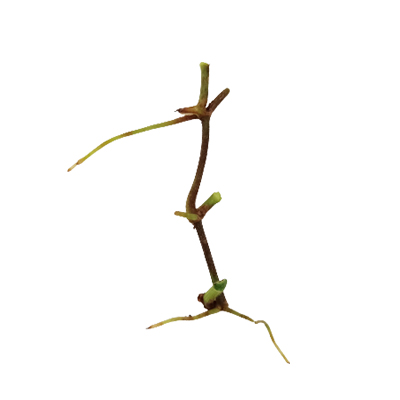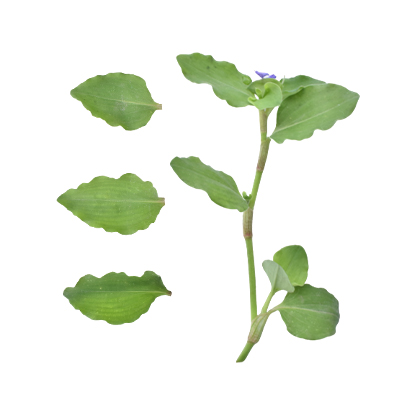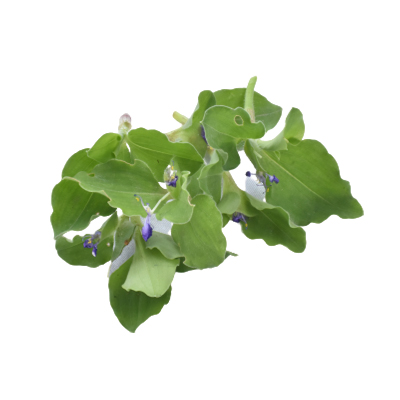Benghal Dayflower
Commelina benghalensis L.
Commelinaceae
Location in our garden
Beneficial Weed



Synonym
Commelina acuminata R.Br.
Commelina canescens Vahl
Commelina cavaleriei H.Lév.
Habitus
Herbaceous. A spreading, annual or perennial mucilaginous herbaceous plant that can be 60-90 cm long. Benghal dayflower is sparsely and shortly pubescent, sometimes bearing subterranean runners with self-pollinating, reduced flowers and thin roots.
Part Used
Leaves
Roots
Sap
Stem
The Whole Plant
Growing Requirements
Full Sunshine
Need Shade
Drought Resistant
Habitat
Forest
Grassland
Overview
Benghal dayflower is native to tropical Asia and Africa. The leaves are harvested from the wild for local consumption, in many areas they are viewed as famine food and only eaten in times of scarcity. The plant also has local medicinal uses and is the source of a dye. The fresh plants are sold to Chinese herbalists in Malaysia. It is difficult to eradicate in cultivated areas because of its subterranean, seed-bearing capsules. The IUCN status conservation is Least Concern.
Vernacular Names
Huo chai tou (Chinese), Marianinha (Portuguese), Commeline (German), Kanchara (India), Tsuyukusa (Japanese), Rumput mayiam (Malaysia), Gewor (Indonesia), Bias-bias (Tagalog-Philippines), blouseblommetjie (Africa).
Agroecology
A plant of warm temperate to tropical areas where it can be found at elevations up to 1,600 m. It grows well between 20-40 °C. Prefers a sunny position. It is found in wet and dry lands making it a troublesome weed in arable and plantation crops. This plant grows best in moist and highly-fertile soils. The stems have a high moisture content, and once well rooted the plant can survive for long periods without moisture availability and can then grow rapidly on the onset of rains. the major pollinators are insects, mainly ants.
Morphology
- Stem - slender, creeping or ascending, stems root at the nodes.
- Leaves - oval, 4 to 7 cm long, and pointed at both ends. The spathes are 1 to 3 together, shiny, pale apple-green, funnel-shaped, compressed, about 1.5 cm long, and wide.
- Flowers - subtended by bracts with their edges fused to a length of about 10 mm to form a flattened funnel-shaped spathe, 1.5 cm long and wide, have three lilac blue petals 3-4 mm long, the lower rather smaller than the two laterals and occasionally white. There are two anterior cells which are two-ovuled.
- Fruits - small, consists of a pear-shaped capsule with five seeds and the capsule open when mature (dehiscent).
- Seeds - sometimes appear sugar-coated are 2 mm long, ribbed-rough (rugose) and greyish brown in colour.
Cultivation
It reproduces both vegetatively and by seeds. It spreads by runners which root at the nodes and by re-establishment of stem fragments. It also produces underground stolons which bear cleistogamous flowers and seeds, in addition to the normal aerial flowers.
Chemical Constituents
Saponins, flavonoids, polyphenol, phlobatannins, tannins, essential oils, alkaloids, cathecol, aleuron, lactone, coumarin, amino acid, quinones.
Traditional Medicinal Uses
Medicinal Uses
- to reduce high blood pressure, treats barren women, infertility, burns, sore throats, sore eyes, dysentery, rashes, anti-bacterial, analgesic, anti-cancer, anti-proliferative, anti-lymphoma, and leprosy.
Traditional Uses
- Plant decoction is used as an emollient collyrium, and to combat strangury.
- In Cameroon, the stem is used for probing wounds.
- In Kenya, it is used in conjunctival problems associated with measles.
- In India, it is used in the treatment of leprosy and nervous system disorders. Also, reported use for mouth thrush, conjunctival inflammation, psychosis, epilepsy, ophthalmia, sore throats, insanity, and exophthalmia.
- In Southern Africa, used to combat infertility.
- In Bangladesh, it is used for otitis media, suppurative sores, snakebites, swelling and burns. It is also used for cataracts, night blindness, pain (headaches and toothaches), skin diseases (eczema, abscesses, acne, scabies, warts), respiratory tract disorders.
- in Tanzania, the mucilage from the flowering parts is used to treat infants' thrush, and bruised leaves are used for burns.
Part Used
Reference Sources
- CABI. (No date). Invasive Species Compendium. Commelina benghalensis (wandering jew). https://www.cabi.org/isc/datasheet/14977. 11-02-2021.
- StuartXchange. (2015). Philippines Medicinal Plants. Commelina benghalensis Linn. http://www.stuartxchange.com/BiasBias.html. 11-02-2021.
- Fern, Ken. (2019). Useful Tropical Plants. Commelina benghalensis L. http://tropical.theferns.info/viewtropical.php?id=Commelina+benghalensis. 11-02-2021.



